When the Next Recession Hits, Where Will You Be?
Posted on — Leave a commentThe party is over. After October’s stock market bloodbath, the 6-month win streak for the S&P 500 has officially ended.

While you may have already added up the damage to your retirement account after last month’s stock market collapse, here are a few things to keep in mind.
- October marked the worst month for the S&P 500 in 7 years.
- The Dow fell 5.1%
- The Nasdaq plunged 9.2% (worst month since November 2008)
- Small caps stocks lost the most – with the Russell 2000 down 10.9%
October was a rough ride for stock market investors. Unfortunately, the roller coaster ride is just beginning.
Recession Risks Are Rising
The current U.S. economic expansion phase just hit 112 months. That means it is the second longest in U.S. history and is now running on fumes. Economists like to call that “late cycle.”
In a new report released in early November, S&P Global Economics now see a 15%-20% risk of recession in the U.S. over the next 12 months – up from 10%-15% from their August forecast.
Now more than ever, it’s essential to take steps to protect your assets. The warning signs are everywhere. It’s time to take action.
As the country’s largest and most respected tangible assets firm, we’ve helped over 450,000 Americans enjoy financial security through diversification into gold bullion and rare coins.
Our research on gold including an exclusive 35-year study on long-term investment performance in gold bullion and rare coins and on economic trends in our monthly Blanchard Index help clients understand how these assets can help your portfolio outperform.
Here’s a snippet on what could lie just around the corner.
2 Key Calls from Capital Economics on November 7
- Boom will turn to bust in 2019
“With the boost from fiscal stimulus now fading and signs that the Fed’s monetary tightening is starting to weigh on rate-sensitive spending, the strength of the US economy is unlikely to last much longer. We expect an economic slowdown to persuade Fed officials to end their tightening cycle in mid-2019, sooner than most anticipate, and to begin cutting rates again in early 2020.”
- More stock market weakness on the way
“Worries about the outlook for the US economy are likely to intensify next year as growth slows, putting further pressure on equity markets around the world. We think the dollar and Treasury yields will fall back too, as the Fed ends its tightening cycle sooner than investors anticipate.”
What else are we watching?
Stock Market Valuation Levels. The cyclically adjusted Shiller P/E ratio, which looks at average earnings over the past 10 years— is a valuable indicator to assess stock market risk.
Despite the October stock market crash, valuations remain extremely high: they remain close to the second-highest level of all time, exceeded only by the dot-com boom.
Home Sales are Slowing
Existing home sales historically lead the beginning of a downturn in the economy. Existing home sale fell for the sixth month in a row in August. Home affordability fell to its lowest level in 10 years. Rising mortgage rates are slowly choking off home sales.
Don’t ignore these economic canaries in the coal mine.
How You Can Profit with Gold
Physical gold bullion is considered by many to be a recession proof asset. During the 2008-2009 gold was the top performing asset. As the economy tips from its current aging expansion phase into recession, gold is poised for dramatic gains. Our research proved that portfolios that contain at least some gold or rare coins outperform those that don’t.
Take the first step now to protect and profit with gold. Learn more about the Blanchard difference in this 1-minute video.
As Good As Gold (And 9 Other Gold Quotes We Think You’ll Like)
Posted on — 1 CommentAs Good As Gold (And 9 Other Gold Quotes We Think You’ll Like)
Have you ever thought about how much the word gold permeates our everyday language?

Charles Dickens wrote the famous phrase “as good as gold” in The Christmas Carol published in 1843. Here’s a few more examples:
- Silence is golden
- Pot of gold
- A gold mine of information
- Heart of gold
- The golden word
- Worth its weight in gold
- The golden age
- Golden years
- Golden parachute
The key similarity is that all the sayings underscore the truth that gold is valuable, universally accepted and a measure of wealth.
Shifting over to the investing world, gold remains a time-honored, safe-haven investment.
Gold performed as expected in recent weeks – the price of gold climbed, when stocks fell. If you want to hear more what others have said about investing in gold throughout history here’s 9 quotes we think you’ll like.
- “Money is gold, and nothing else” — J.P. Morgan
- “If you don’t trust gold, do you trust the logic of taking a beautiful pine tree, worth about $4,000 – $5,000, cutting it up, turning it into pulp and then paper, putting some ink on it and then calling it one billion dollars?” — Kenneth J. Gerbino
- “To prefer paper to gold is to prefer high risk to lower risk, instability to stability, inflation to steady long term values, a system of very low grade performance to a system of higher, though not perfect, performance. — William Rees-Mogg
- “Start now buying gold coins, any kind, and hoarding them.”— Dr. John L. King
- “The desire of gold is not for gold. It is for the means of freedom and benefit.”– Ralph Waldo Emerson
- “Praise, like gold and diamonds, owes its value only to its scarcity.”– Samuel Johnson
- “We are now at a pivotal moment in history. In coming years we will see a destruction of wealth that the world has never before encountered. The illusory paper fortunes created by the credit bubble will be totally decimated. Very few investors will take any preventive measures to preserve their wealth. But for the small number who own gold and silver and some precious metal stocks, the coming years will not only insure their wealth but also be an investment opportunity of remarkable proportions.” Victor Sperandeo
- “Paper money eventually returns to its intrinsic value – ZERO” – Voltaire in the 18th century
- Gold will be around, gold will be money when the dollar and the euro and the yuan and the ringgit are mere memories.”— Richard Russell
If any of these quotes have inspired you to learn more about gold, give Blanchard a call today at 1-800-880-4653.
What’s your favorite saying about gold? Leave a comment below!
READ MORE
2 Reasons This Is a Once in a Generation Opportunity to Buy Gold
Barron’s Cover Story: Why Gold Should Be Part of Your Portfolio
You Already Own Gold, Now How Do You Get to It?
Posted on — Leave a commentThinking of buying gold? You already do and it’s sitting in your pocket. On average, a cell phone consists of approximately .001 troy ounces of gold in its hardware. At today’s prices this amount totals about $1.23.
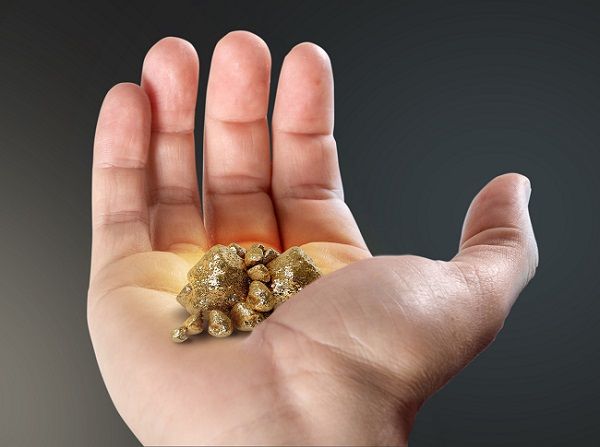
Not much, but we’re only getting started.
Your desktop computer has .0025 troy ounces of gold inside totaling a little more than $3. There’s even more gold – about $30 worth – hiding inside your laptop. Most modern cars include computers and airbag sensors requiring gold which adds to your total. It’s easy to see why demand for gold by the electronics industry has grown for eight consecutive quarters.
In fact, in the latest quarter this demand equaled more than 85 tons. Manufacturers need more gold to build the hardware that keeps our economy running. Computer printed circuit boards and servers are among the biggest demand drivers. Manufacturers need more gold as consumers choose to ditch their old phone and buy a new one with superior memory capacity.
It’s the old phone, however, that has people interested. The reason: experts in e-waste calculate that one ton of cell phones holds 80 times more gold than the average gold mine. Companies are awakening to the value of your forgotten phones and old laptops. This year Apple debuted Daisy, an assembly line that works in reverse to dismantles old iPhones.
Academics have also turned their attention to the benefits of reclaiming precious metals from e-waste, a practice called “urban mining.” Researcher published in Environmental Science and Technology calculate that “ingots of pure copper and gold could be recovered from e-waste streams at costs that are comparable to those encountered in virgin mining of ores.” Moreover, their research was limited only to television sets. Expanding the analysis to include all other electronic devices would reveal even greater opportunities considering that the average family has about 80 electronic devices.
Most dismiss this estimation claiming that it’s too high. However, if you start to think of things like lamps, power tools, and toys it doesn’t take long to hit 80. All of these items are considered e-waste. As one expert explains, “e-waste is any product you discard that is still working.”
Companies want this waste. Harvesting gold and other precious metals from e-waste is easier than sourcing a mine and digging. It’s also more environmentally sound. Recycling reduces the burden on our environment while diminishing the carbon output from mining efforts.
Globally, we generate approximately 40 tons of e-waste every year. We recycle only 13 percent of that total. Gold is the invisible hand offering a solution. In other words, the presence of gold in these devices is exactly what’s propelling industries to collect and dismantle e-waste in an environmentally friendly way.
Today, countries like South Korea are using urban mining to source rare earth metal from discarded batteries. As recently as 2016 experts in Korea yielded more than $18 billion worth of metals from electronics. This volume represents nearly one-quarter of the country’s demand.
The future of gold resources is not in the ground, it’s in your hand.
Could Palladium Become Worth More Than Gold?
Posted on — Leave a commentPalladium hit an all-time record high last week, as supply driven concerns propelled the price above the $1,100 an ounce level for the first time. Palladium is used widely in pollution control devices for gasoline powered cars and trucks.
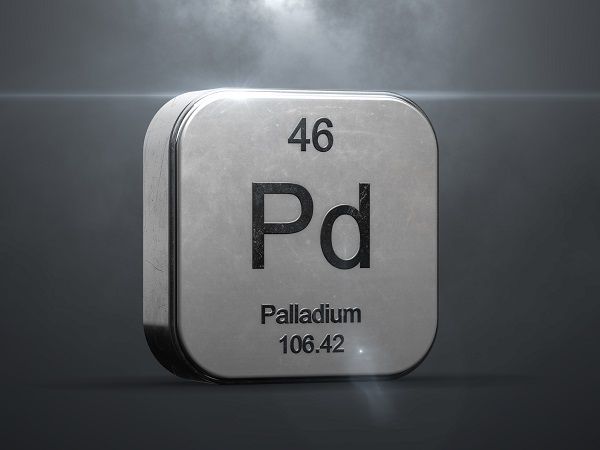
Used to manufacture catalytic converters in cars, global demand for palladium has soared amid growing auto sales around the world and a shift toward gasoline powered engines, away from diesel. Catalytic converters are built into the exhaust systems of most cars that burn fossil-fuels. The purpose is to mitigate the toxic emissions that emerge from an internal combustion engine by converting harmful pollutants into less harmful emissions.
Analysts say the factors which tipped the price of palladium over the $1,100 level remain in place, which opens the door to potential that palladium could indeed become worth more than gold in the weeks ahead.
Comparing Precious Metals
Comparing the price differentials between precious metals, the gap between an ounce of gold and palladium recently narrowed to $165. Notably, it’s been 17 years since palladium was last this expensive compared to platinum.
Political Tensions, Supply Tightness
Political tensions between the U.S. and Russia moved to a high boil recently as President Trump said he will pull out of a nuclear arms control treaty dating back to the Cold War: the 1987 Intermediate-range Nuclear Forces (INF) Treaty, which triggered the latest run-up in palladium.
Russia provides the world with about 40% of total palladium supplies each year. Concerns that sanctions against Moscow could reduce the palladium supply flow sent the price soaring to its new record-high.
Big picture, supply tightness amid growing global demand boosted palladium sharply in recent months. From its August low, palladium skyrocketed 39% higher.
Looking ahead, palladium shortages are forecast through 2020, leading to the “tightest” market in two decades, according to Citigroup Inc. Any disruptions to the global supply chain due to tensions with Russia would only exacerbate the matter and drive palladium even higher, analysts warn.
What This Means for You
Demand is high and supply is tight for palladium, which is a recipe for higher prices ahead.
Both platinum and palladium are both industrial and precious metals, which means they benefit from a dual demand stream from both industry and investors.
Investors can and should diversify their tangible assets portfolio with diversification across metals types through purchases of a mix of gold, silver and platinum, and palladium coins, bars and bullion.
Portfolios that include an allocation to precious metals help investors manage risk more effectively. The stock market recently collapsed quickly, with the S&P 500 down over 10% from its high in just a few weeks. The stock market remains vulnerable to more declines and a bear cycle may be setting.
Gold and other precious metals have a low to negative correlation to asset classes like stocks and bonds, which can be especially valuable during down cycles in equities. If you haven’t fully diversified your portfolio, act fast before the next leg in the stock market decline unfolds.
If you’d like to purchase palladium or another precious metal, contact your Blanchard portfolio manager and we can discuss options best suitable for your individual situation.
The Long and Short of Gold
Posted on — Leave a commentThe Long-Term: The China Connection

Few in the US are familiar with China’s “Belt and Road” initiative, but they should be. The reason: It is the largest infrastructure and trade plan on Earth.
The Belt and Road initiative is a long-term project to develop infrastructure throughout Asia, Africa and Europe. The words “belt” and “road” refer to land routes and sea lanes as means of trade. The massive endeavor will cover over 68 countries and more than half of the world’s population. These numbers are staggering and some estimate the project accounted for up to 40% of the global GDP as recently as 2017.
A program of this size requires serious investment. This is where gold comes into the picture.
The countries involved all have differing levels of gold reserves. Research shows that the area covered in the Belt and Road initiative represents approximately 80 percent of global gold consumption.
As a result, countries like China are allocating resources to gold mining efforts. For example, one of China’s largest gold mining companies, Zijin Mining Group Co, has embraced a global strategy. Today, they have three projects within the “Belt and Road” region.
Mining projects like this will be critical in supporting the ongoing infrastructure plan especially as developers seek ways to fund projects without a heavy reliance on credit. “Over time this could boost the depth of liquidity in China’s gold market,” explains the Head of Commodity Markets’ Strategy at The Bank of China. It’s not surprising to learn that at the end of last year China identified gold resources totaling 13,195 tons.
As gold becomes a more important source of funding, because of the Belt and Road initiative, gold purchasers may see their investment rise.
The Short-Term: The VIX Starts to Twitch
Volatility is back and so is gold. This month alone gold is up 3.2%. Concerns about global growth prospects and already high equity valuations have eroded investors’ confidence. “There have been doubts whether gold is a safe haven, but the reaction to recent equities moves has confirmed that it is,” remarked a commodity analyst at Julius Baer.
Some have concluded that economic growth in the US peaked earlier in the year and that we face a downhill path. Moreover, Federal reserve growth rates mirror this outlook given that officials project 2.5% on 2019, then, 2.0% in 2020 and finally, 1.8% in 2021.
Gold investors can use this valuable three-year project to start planning today. As growth rates fall, equity markets are unlikely to repeat the significant gains we’ve seen over the past nine years. At the same time interest rates will continue to increase as Jerome Powell has made clear his intention to incrementally increase rates. This rise will make bonds a more attractive investment which will further encourage investors to reduce their equity holdings which will drive stocks lower. In these conditions we may see gold continue to rise given its “haven” status.
We’re already seeing early indications of this inverse phenomenon. With most analysts in agreement about the future of the US economy, clearly the time to own gold is now.
How Rising Interest Rates Impact Your Wallet
Posted on — Leave a commentThe Federal Reserve raised interest rates three times in 2018. There could be more rate hikes on the way. Wondering how higher interest rates can impact your wallet?
Here’s the short answer.

Savers win. Borrowers lose.
Higher interest rates can affect Americans in a variety of ways, from simple bank savings and CD accounts to home mortgages and credit card interest rates. Here’s what you need to know.
Cash parked in savings accounts earns higher returns.
As the Federal Reserve raises interest rates, banks typically raise the interest rate they pay you on savings account and CDs.
Don’t get too excited. Banks move slowly, the returns are still low and barely keep up with inflation.
The national average for a 2-year CD stood at 0.94%, with a savings account interest rate at 0.09% in the week ending Oct. 19, according to Bankrate. Online banks typically offer slightly more competitive rates than brick and mortar banks. For example, Ally Bank currently shows a 2.50% return on a 2-year CD.
How does this compare historically? In 1984, a 1-year CD came with an enticing 11.27% interest rate.
Bottom line: Savers can generate a little more return on their cash. But, the amounts are small.
Borrowing costs are rising.
Anyone who borrows money pays more for that privilege in a rising interest rate environment.
- An interest rate is the amount of money a bank or credit card issuer charges you to borrow money.
Every time the Fed raises rates, credit card companies almost instantaneously increase their rates by the same amount. So, if you have an average 17% interest rate on your credit card, a .25% Fed rate hike will mean your credit card company will lift your APR to 17.25% soon after.
Anyone who carries a balance on their credit card from month to month, has already seen the interest on that debt rise at least three times this year.
Americans paid banks $104 billion in credit card interest and fees in 2018, up 11% from the prior year, and up 35% over the last five years, as Fed rate increases have been passed on to consumers, according to Magnify Money.
Bottom line: People who carry a balance on their credit cards pay higher interest.
Rising rates impact homebuyers and homeowners too.
- New homebuyers face higher mortgage costs than they did at the start of the year.
- Anyone with an adjustable rate mortgage (ARM) will likely see their rate adjust higher at the end of their fixed rate period.
Mortgage rates already jumped in 2018 and will likely continue to head higher as the Fed continues to hike rates.
- A 30-year fixed rate mortgage climbed to 5.10% in mid-October – an 11-year high.
Other real-life impacts for consumers in a rising rate environment? Any college student taking out a new student loan will pay higher interest rates this year.
Bottom line: Homeowners and students will pay more to borrow money.
Putting It All Together
On the face of it, higher interest rates sound bad.
They do, in fact, trickle down to consumers and businesses with very real impact. In the big picture, however, the Fed’s official interest rate at around 2.00% is still extremely low – and well below an average rate of around 3.5 or even 4.00% and higher during healthy economic periods.
The unique circumstances the U.S. economy faced after the 2008 global financial crisis delayed the Federal Reserve from raising interest rates in a normal manner. The Fed kept interest rates low for so long in an attempt to keep the economy afloat when growth levels were much lower than normal in an economic recovery.
Now, the Fed wants and needs to raise interest rates so the next time the economy sinks into recession, it will have some ammunition to help stimulate growth. Typically, when the economy turns south, the Fed lowers interest rates to improve the economy. The Fed won’t be able to do that during the next recession if interest rates stay low.
The best way for you to handle a rising interest rate environment is to understand the impact and make adjustments where you can.
Consider locking in a fixed rate mortgage (as opposed to a floating ARM). Pay off credit card balances every month, or shift debt to a 0% intro APR balance transfer card to get a break on interest. Rising rates can hurt in the short-term, but in the long-run they allow the Fed to get back to a normal situation, which will pay dividends during the next recession.
How to Find Your Anchor
Posted on — Leave a commentThis month the International Monetary Fund (IMF) decided it was less optimistic about future global growth. The members reduced their forecasts for economic expansion worldwide from 3.9% to 3.7%. They had two key reasons for the revision.
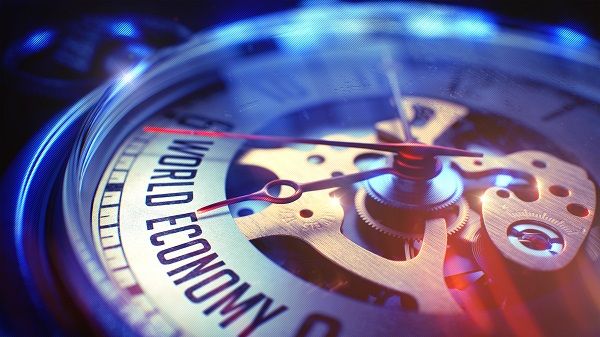
First, they explained that trade barriers are increasing and slowing international commerce. Second, they cited uncertainty in emerging markets as a result of capital outflows.
Simply put, “the global economic weather is beginning to change,” explained the IMF Managing Director.
Meanwhile, The Wall Street Journal reported that fund managers are equally concerned. A survey from Bank of America Merrill Lynch showed that these managers are as concerned as they were in 2008.
Investors appear to share this concern now that volatility is back in the equities market. The result: investors are considering safe havens. But, in an uncertain world traditional havens aren’t what they were. Consider, for example, the US dollar. For many years the dollar was a reasonable place to store and preserve wealth. As recently as this year the WSJ Dollar Index increased 9.4% from its low in February.
However, the value of the dollar has been relatively static during the recent equity market sell off according to the WSJ. This means that investors fleeing stocks don’t see the dollar as a place to “wait it out.” So, where are they going instead? They’re going for the gold.
Recently, the World Gold Council reported on gold’s “flight-to-safety” status amid an upheaval in asset classes like stocks and treasuries. They underscore the threat of high valuations in the stock market as a reason for caution. They explain that “US stock valuations are at their highest since the dot-com bubble and higher than Black Monday.” Moreover, global credit market debt has increased by massive proportions over the last 10 years.
With so much uncertainty, investors are more prone than ever to making emotional moves within their portfolios. Rather than constantly adjust the sails to catch changing winds, investors need confidence. Finding this confidence means finding an anchor to some amount of stability. For many this anchor is gold.
Gold, over the long-term, appreciates in value. However, what gold offers in peace of mind is equally valuable. As the sea becomes choppy, gold is an asset that offers a sense of stability. As a result, investors benefit in two ways.
First, they have reason to abstain from impulsive market moves that erode wealth and create tax burdens. Second, they preserve their wealth during the inevitable market swings that test the resolve of even the most seasoned investors.
The time to find this stability is now, before the currents change. Fund managers and the IMF agree that significant market movements and global economic shifts are ahead. Risk cannot be eliminated, but it can be managed.
Recently leaders at Pacific Investment Management Co offered a clear assessment of the future stating that, “Our models, like many others, see an increased risk in 2020.” They believe that the probability of a recession is “quite likely” within the next five years.
Mercury Dime History and Key Dates
Posted on — 16 CommentsYou can purchase a Mercury dime for a few dollars. Yet, some of the most coveted key dates and mint marks are worth north of $25,000. Not bad for a dime.
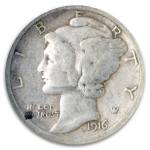

Collectors actively pursue this stunning coin for the exceptional design created by Adolph A. Weinman. The metal content is 90% silver and 10% copper. The mints include Philadelphia, Denver and San Francisco.
Coin description:
Weinman’s design shows the head of a youthful Liberty in profile. She wears a cap that has wings, which were meant to represent “Liberty of Thought.” The public, however, misunderstood Weinman’s intent, believing her to be Mercury, who wore a cap and sandals with wings. (This would make sense since Mercury is the god of commerce.) Weinman’s monogram AW sits on the right of the Liberty’s neck.
The reverse features an unusual (for those used to modern coinage) design: a fasces depicting unity and strength, and an olive branch symbolizing peace.
1916 is a special year in the history of U.S. coinage.
Mercury dimes debuted in 1916 – a groundbreaking and unique year in the history of U.S. coinage. In 1916, the U.S. Mint created three new silver coins and it marked the first year – ever – that different designs were used on the dime quarter and half dollar.
As a coin group, Mercury dimes aren’t rare. An incredible 2.5 billion were struck from 1916 through 1945. Mercury dimes were last struck in 1945, when a new dime was created to feature Franklin D. Roosevelt, following his passing.
During the depths of the Great Depression, no mercury dimes were minted from years 1932-1933.
Today, rare coin collectors classify Mercury Dimes into “early dates” (1916-1931) and “late dates” (1934-1945) categories. Nearly all late dates are common and can be easily acquired.
There are several key dates for Mercury dimes.
Their scarcity increases their value into the thousands.
The 1916-D is perhaps the most famous and sought-after dimes. The original mintage was around 250,000. Today, 1916-D is very rare in mint state.
Other Mercury dime key dates include 1921 and 1921-D and 1942-1 and 1942 -1D. The latter key dates show “overdates” with the number “2” struck over the number “1.”
Blanchard recently had not one, but two 1916-D Mercury dimes. They are gone now. They sold fast.
Precious metals and rare coin prices are turning up. If you are interested in acquiring a 1916-D Mercury Dime or any other rare coin, we can help you do that. Blanchard has tremendous reach and respect within the rare coin industry.
Building sets of Mercury dimes can be an exciting and profitable goal.
Many collections of rare coin sets have sold for more than the total value of the individual coins. Coin investors typically follow one of two sets: “type” and “series.” A type set is comprised of all of those coins sharing a single specific characteristic such as a design, designer or denomination. A series include one coin from each date and mint of a particular type.
Other investing strategies include collecting by mint mark, by individual year, or first and last year of the issue of a coin.
The Most Important Economic Measurement You’re Not Watching
Posted on — Leave a commentRecent weeks have left equity investors shaken. A selloff resulted in a 5% loss in the S&P 500 for the month. Until now, equity investors have taken global events, good and bad, in stride. Their confidence was only outpaced by the unstoppable market growth, but something has changed.
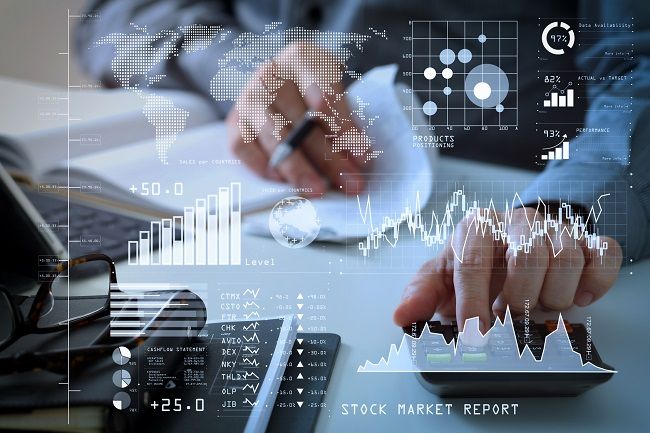
Many have cited interest rate hikes and slowing performance among tech stocks as reasons for the latest equity decline. While, these two factors are likely contributors, there’s more to the story.
There is a growing divergence between the east and the west. This divide is best illustrated by looking at something called the Economic Policy Uncertainty Index. This Index measure the uncertainty influencing today’s economy. The methodology draws on three measurements to calculate the index. Researchers examine:
- Newspaper coverage of policy-related economic uncertainty
- Soon-to-expire tax code provisions
- The level of disagreement among economic forecasters
The latest result of the measurement shows that the economic uncertainty policy index in the US and China is diverging. This measurement suggests a major disconnect between two global powers.
Today, this index for the US is at 53. In comparison, the same measurement for China is at 541. This difference should give equity investors a reason to revisit their long-term expectations for annual returns. The latest drop in the S&P 500 might be an echo of this looming divide. We haven’t reached official “market correction” territory. Therefore, investors are best suited to reposition their portfolios while they still can.
The diverging indexes may also suggest that those outside the US don’t share our optimism. The high expectations of equity investors is best illustrated by today’s high price/earnings (PE) ratios. The historic median for this traditional measure of stock’s value is about 15. Today, that same measurement is more than double that at 31.
This number means that investors are willing to pay much more for stocks than they have historically. Moreover, as PE ratios climb, future returns tend to diminish. For example, when PE ratios are in the 21-44 range, the average 10-year forward return (annualized) is just 5%. This tepid growth is a major difference from the 7% most equity investors use to project their long-term gains.
The time to consider alternative investments like gold is now. Gold serves as a hedge during periods of uncertainty. Recent market fluctuations and a widening gap between US and China outlooks could be early warning signs that investors will need to become more strategic about their methods for reaching their financial goals.
Despite differences in the economic policy uncertainty index, there is one area of agreement between the two nations. Both believe in the economic significance of gold. Both countries, and the rest of the world, assign the same value to gold and always will.
It’s not surprising to read that the head of research at foreign exchange trading form Pepperstone remarked that “We have seen a rapid shakeout of very crowded and over-owned U.S. assets.” He concluded, “Statistically, it feels as though convergence is due.”
2 Reasons This Is a Once in a Generation Opportunity to Buy Gold
Posted on — 2 CommentsGold fell just below $1,200 an ounce in August and many on Wall Street are now whispering that a bottom is in place.

A new MarketWatch article entitled: “Why Gold Prices May Have Already Bottomed” highlighted a few key reasons that Wall Street pros are picking up bargain basement prices in gold right now.
The good news is that you can too! (See our simple 3 step guide to buy gold at the bottom).
Here’s why many think gold is a good buy right now:
Central banks are buying gold in full force
In the first half of 2018, central banks added a net total of 193.3 tonnes of gold to their reserves – an 8% increase from the same period in 2017. This marks the strongest first half for gold central bank buying since 2015, a new World Gold Council report said.
As governments around the world seek to diversify their reserves away from the U.S. dollar, gold is increasingly becoming an important component of central bank purchases.
For decades the U.S. dollar has been the world’s “reserve currency.” For now it still is. But, history shows that reserve currencies do change over time. It’s not “If” but “When” the U.S. will lose the reserve currency status. When that happens, central banks will be less inclined to hold significant amount of U.S. dollar reserves, which means they will sell our currency, likely pressuring the value sharply lower.
- Previous reserve currencies included the British pound sterling, the Spanish dollar, and before that the gulden from the Netherlands and the fiorino from Florence.
Central banks are buying gold because it is a recognized currency and asset in all countries around the globe and is not tied to the rise or fall of any one nation’s fortunes.
Consolidation in the gold mining sector
This is another signal that the gold market may have already bottomed out. In late September, gold giants Randgold and Barrick Gold agreed to a merger that will create an $18.3 billion gold mining giant. Mergers are viewed as a signal that an industry is at a turning point.
Frank Holmes, chief executive and chief investment officer at U.S. Global Investors believes the gold merger is “positive for the industry” and signals a “once-in-a-generation buying opportunity” for investors, the MarketWatch article said.
3 Steps to Add Gold to Your Portfolio
1. Choose Your Weights
There are different weights of gold coins available, so investors can buy coins that are as little as 1/10 of an ounce up to the more standard one-ounce coins, in addition to larger bars for investors making a more sizeable investment.
2. Purchase easily online and Blanchard will ship directly to you.
3. If you’d like to speak with an expert before you buy, contact Blanchard and let us help you build a solid portfolio that matches your personal financial goals. Discuss your financial goals and risk tolerance level with a Blanchard portfolio manager. We will take the time to learn your investment objectives, investment time horizon and risk appetite before recommending products for your consideration.








